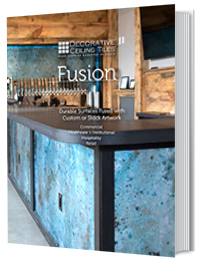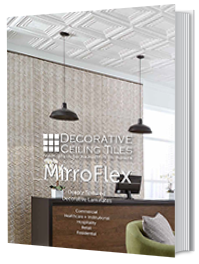The Untold Truths About the Benefits of Installing Basement Wall Panels
Written by Milan Jara on 22nd Aug 2022

When people finish a basement, they typically use drywall. However, there are significant benefits to basement wall panels most people aren’t aware of.
Are you considering finishing your basement? Perhaps it is time for an upgrade. A finished basement can give you more space, adding to your home’s usable square footage. While most people consider nailing drywall over the studded portions of a wall, there are disadvantages to this method.
Theoretically, installing drywall appears to be a practical way to finish a basement. However, basements are prone to flooding or water seepage, and after water comes in, it is easy for these panels to mold. Mold is very unsightly and can potentially make people in the home sick.
The simplest solution to finishing a basement is to install basement wall panels. These wall products adequately complete the area and provide basement waterproofing before you move in any furniture.
How Does Using Basement Wall Panels Differ from Drywall?

There is also a notable carryover between the basement and bathroom areas, and like bathroom drywall, wall panels in your basement withstand any moisture, adapting to wet and damp environments.
Purple drywall used in bathrooms is a primary option for basements. The fiberglass behind these bathroom wall panels provides warmth, and they utilize different materials than drywall, making them more suitable for the job.
Basement Wall Panels
There are several types of wall panels, making it challenging to pick one. The goal is to waterproof the area, and homeowners must ensure no water vapor can enter their walls, ceiling, or floor.
Drywall Panels
Drywall panels are the easiest option to use in the basement. Homeowners should avoid blue/green shades and invest in purple drywall. Don’t worry about the color; you can paint over it. The purple hue of this paneling is not for appearance.
Drywall is color coded. Green boards are best for dining and living spaces that aren’t exposed to moisture or humidity. Blue boards are often used in kitchens.
Kitchens suffer from a little humidity and moisture, but this pales in comparison to bathrooms and utility rooms. Purple boards in these areas can withstand high moisture and resist mold.
After significant flooding events, purple panels may be more difficult to find since stores will reroute supplies to places that need them the most.
Plastic Basement Panels
These panels are ideal for moist areas with the potential for water seepage and leaks through wall cracks. Leaks can worsen cracks if left unaddressed, causing foundation problems over time and requiring basement crack repair. Plastic basement wall panels have a system that effectively drains water using a trough behind your wall.
Basement Finishing System
Prefabricated wall panels have the benefit of combining acoustic and thermal insulation. They come in kits containing everything you need to finish your space, but these basement wall insulation panels are not always waterproof.
Panel Living System
These basement systems also come in kits that contain all materials necessary for installation, including durable materials and moisture proofing that will pass insulation codes. These kits are available in various textures and colors, allowing you to establish a second living room, man cave, media center, or game room by simply installing a wall panel system.
Wood Panels

Wood panels are a viable solution to cover foam insulation or fiberglass and make the area look good.
Homeowners can combine several options. Place decorative wood paneling over any of the options previously mentioned and finish it with chair rails, wainscoting, or wallpaper. You can also use faux panels like fabric, brick, wood, or stone to customize the wall panels to your style.
Adding a wall panel system to your basement doesn’t qualify as total basement finishing. You may have to seal the walls, depending on which wall type you used.
Waterproofing Basement Walls
There are several methods for waterproofing your unfinished basement walls. You can use various materials, including polyurethane, liquid membrane waterproofing, acrylic waterproofing, silicate-based concrete sealers, and plastic sheets/panels. There are vast differences between these materials.
- Liquid Membrane. This method involves adding multiple coats of waterproof primer. The best way to do it involves putting on the initial coat and letting it dry before applying the next one. You can use a spray applicator, trowel, or roller. Polymer-modified asphalt provides the best results if you spray it on the surface.
- Cementitious Waterproof. Cementitious waterproofing is the best way to stop water if you have water in your basement. It incorporates locally available masonry supplies, making it easy for a novice to mix the material and apply waterproofing. Since it doesn’t receive sun exposure, it won’t expand, contract or weather.
- Bituminous Coating. This coating works to prevent leaks from coming in through cracks. The efficacy depends on polymerization, fiber reinforcement, and formulation grade. It is best not to expose it to sunlight as it may become brittle.
- Polyurethane Liquid. Best used for its weathering resistance, this material does cost more to purchase. It adheres to dry concrete walls, so if you apply it, ensure your concrete walls are completely dry. If the walls are moist, the application may not bond.
- Acrylic Waterproofing. Acrylic waterproofing is added over your existing waterproofing to add more protection.
- Plastic Sheeting. Combine plastic sheeting with other drainage methods for the best results. Install it over existing walls to make them waterproof, then install your paneling for a finished look.
- Silicate-Based Concrete Sealer (Densifier). This sealer reacts with chemicals found in bricks and concrete, which absorb it to make a waterproof wall. You can also use it to seal wall cracks.
There are several benefits to installing basement wall panels instead of using drywall. These remodeling products are more waterproof, will last longer, and contribute more to an unfinished basement's overall environment. Drywall can remain wet and grow mold, whereas insulated panels keep everything dry. Do not take a chance on anything else since there is a high probability of water.




